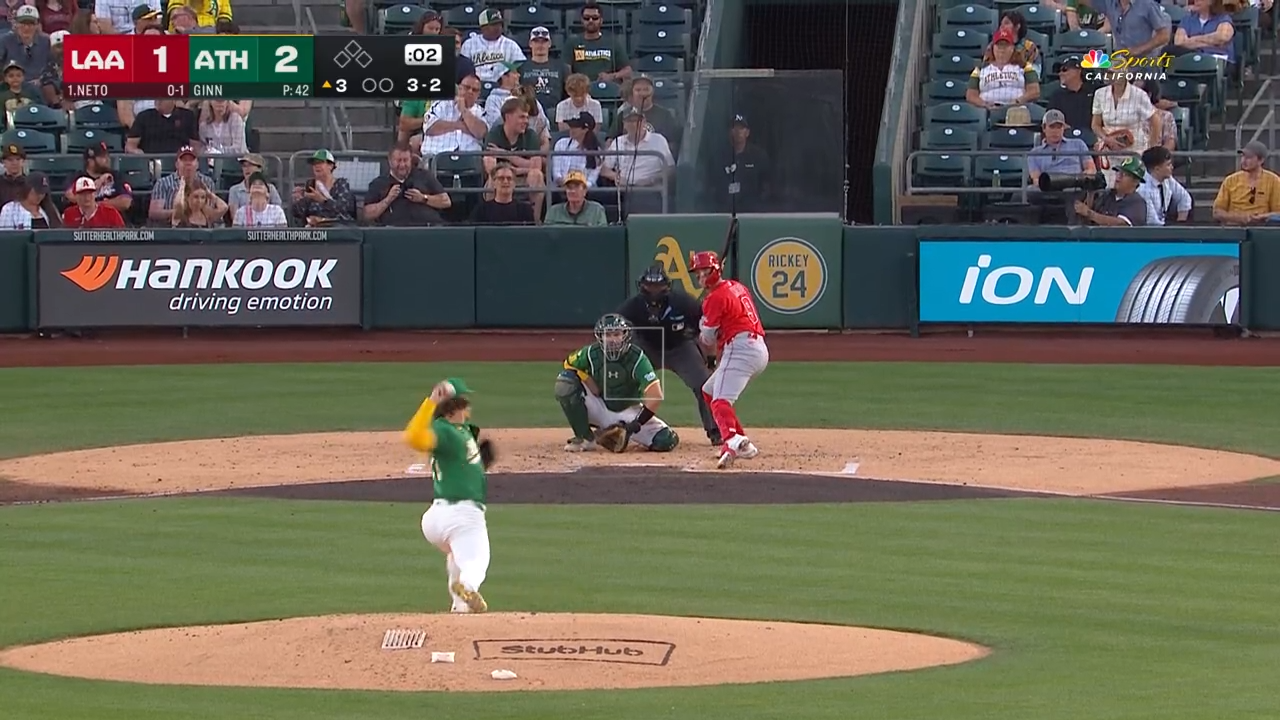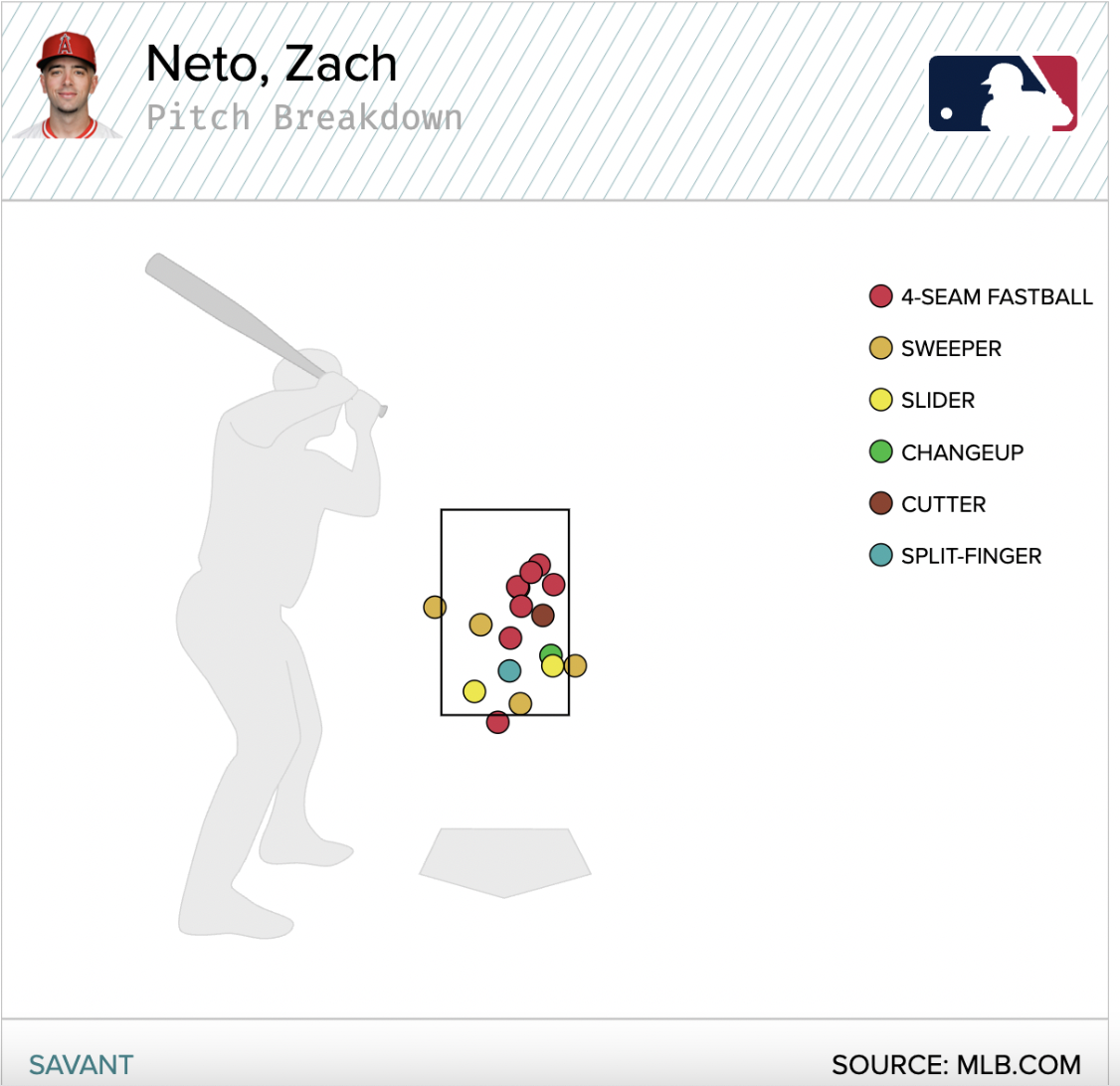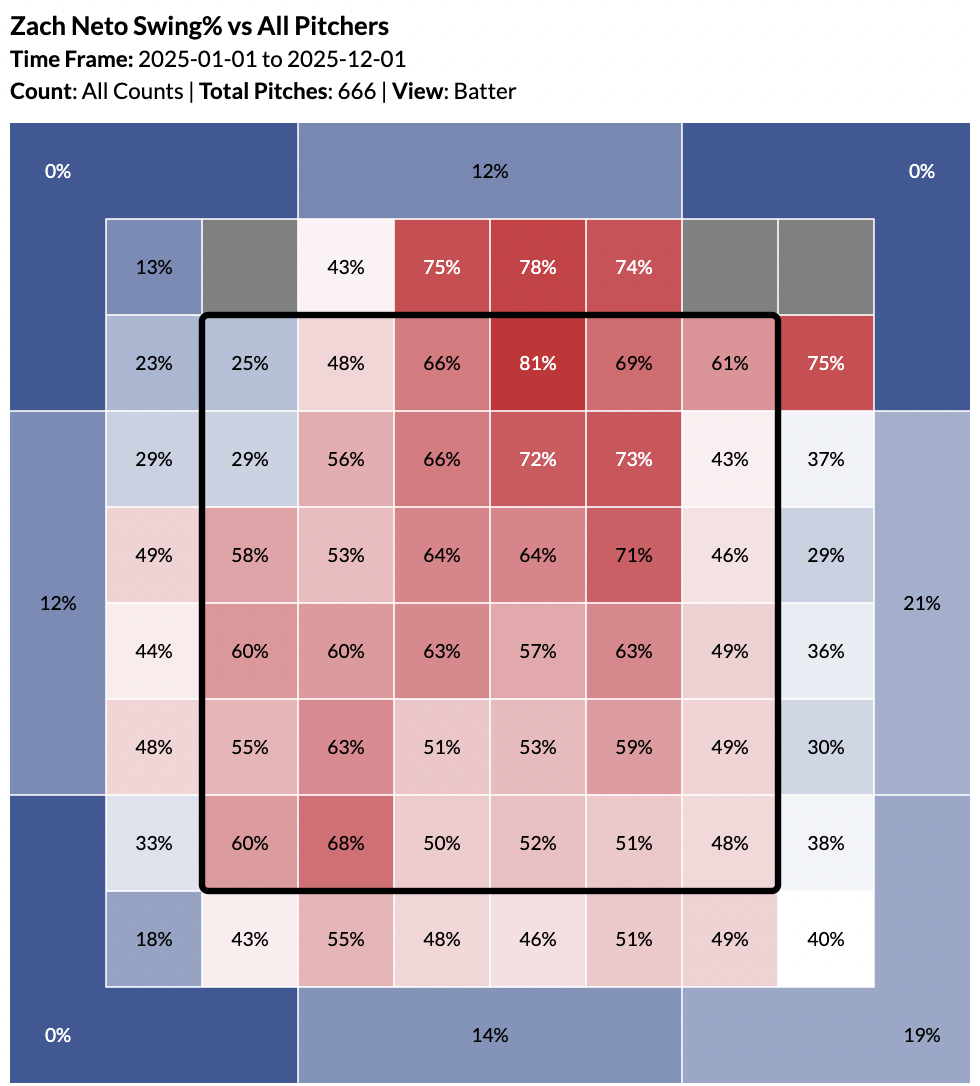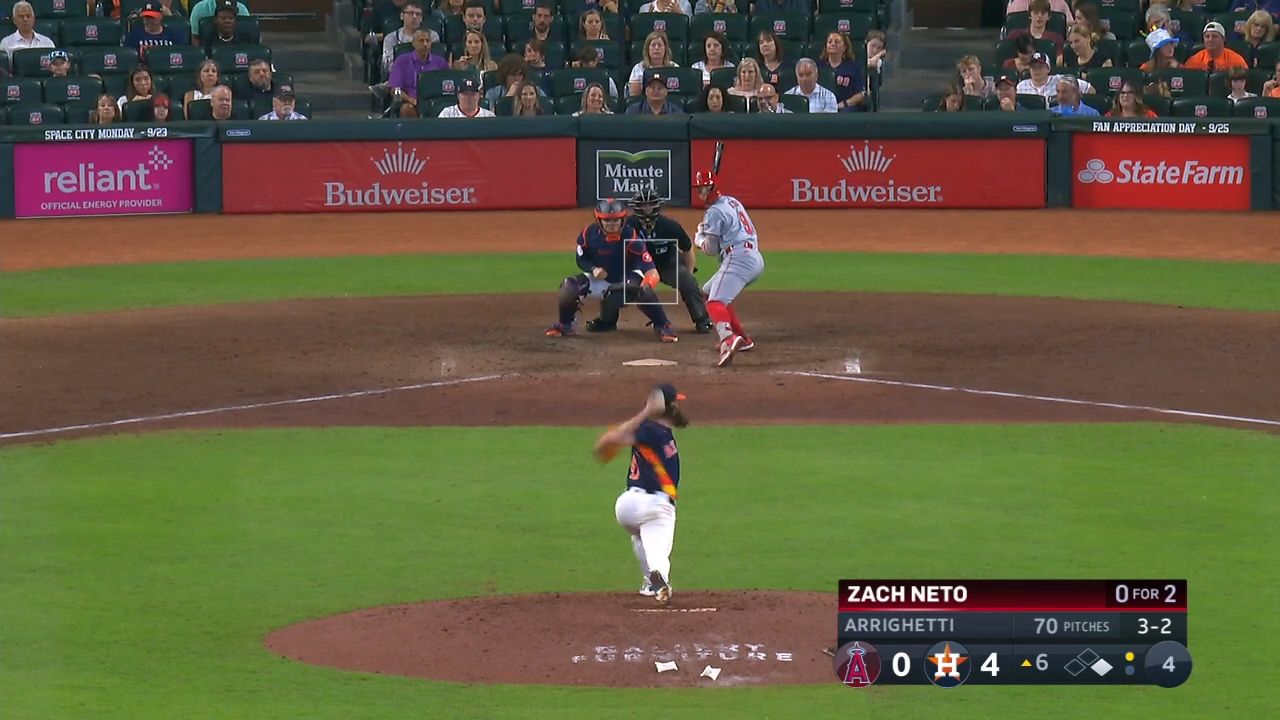If Tarik Skubal locates his fastball up in the zone, opposing hitters are probably cooked. Nearly half the time they swing, they come up empty. If they manage to put it in play, they’re unlikely to do much damage — of the six hits he’s allowed on elevated heaters, five have been singles. That lone extra-base hit? An absolute tank! A 429-foot home run, off a perfectly executed 98-mph heater on the first pitch of the game, courtesy of one Zach Neto, who is currently making a case for low-level stardom.
After a rough rookie campaign in 2023, Neto broke out in his sophomore effort, posting 3.5 WAR by playing a competent shortshop and clubbing enough home runs (23) to cover up his mediocre on-base ability. Even after missing the first few weeks of this season with a bum shoulder, the 24-year-old has managed to take another step forward in 2025: His 139 wRC+ ranks second among all shortstops with at least 150 plate appearances.
That improved line is fueled by a power surge. In just 37 games, he’s homered nine times and hit 10 doubles. The barrel rate has literally doubled, jumping from an 8.4% rate last year to 16.8%. As a result, his .589 expected slugging (xSLG) ranks eighth in baseball, just below big-time sluggers like Aaron Judge, Shohei Ohtani, and Kyle Schwarber.
Those three guys are hard swingers, perennially topping the bat speed leaderboards. But Neto doesn’t fit that profile. He stands at a slender 5-foot-11; even with a slight uptick in bat speed year-over-year, his 71.7-mph average swing speed falls below the big league average. The Angels shortstop isn’t posting elite power numbers because he’s swinging the bat hard. It’s because he’s maxing out the aggression in his approach, selling out for power and mostly succeeding.
To understand Neto’s approach, it requires a tour into the new stats dropped by the beneficent folks at the Statcast factory. The first rollout centered around batting stance data, measuring the vertical and horizontal location of where a hitter stands in the batter’s box and the average “intercept point,” or where the hitter makes contact with the ball relative to the plate and their center of mass. The second rollout featured statistics about bat path, most notably the swing path tilt — the angle of the swing in the 40 milliseconds before contact — and the attack angle, which is the angle of the bat relative to the ball at contact.
The batting stance metrics show Neto creeping closer to the pitcher with each passing year. In his stance, the center of his body is 19 inches back in the box, three inches closer to the pitcher than where he stood in 2024 and overall the ninth-shallowest setup of 252 qualified hitters. You can see his front foot is about as close to the front of the box as possible:

As is clear from that video frame, he also crowds the plate. He stands just 22 inches away from the plate’s center, ranking fourth among those 252 hitters. This proclivity for standing on the inner edge of the box is not new; his distance from the plate is virtually unchanged over the course of his career, and probably contributed to his 16 hit-by-pitches in both 2023 and 2024. (Surprisingly, he’s only been hit twice this year.)
By the simplest possible measurement of stance aggressiveness — adding up the depth in the box and the distance from the plate — Neto ranks second in all of baseball, behind only Xavier Edwards.
This combination of scooching up in the box and crowding the plate allows players like Eugenio Suárez, Anthony Santander, Xander Bogaerts, and Neto to attack all sorts of pitches out in front, making it easier for them to tap into their pull-side power. (The plate crowding also has the benefit of discouraging pitchers from attacking their weakness inside for fear of putting them on base with an HBP.) Neto’s average intercept point is 16 inches in front of the plate, five inches farther out than it was in 2024 and trailing only Bogaerts and Suárez among all hitters in the sample.
The other factor in Neto’s power surge is his swing tilt, which increased from 33 degrees in 2024 to 37 degrees this season — only Spencer Torkelson has added more tilt in 2025 — and the result is even more balls in the air. Because of his aggressive stance and lofty swing, Neto currently sits in the 93rd percentile in Statcast’s “pull air” percentage. Pull air balls are the most valuable of all balls in play, and Neto is rolling them up in bunches.
He’s not exactly doing it like Isaac Paredes, who sets up a little farther away from the plate in order to better punish inside pitches. Conversely, because Neto stands so close to the plate, his favorite pitches to attack tend to be middle or away. The graphic above shows all of Neto’s 2025 barrels — as you can see, there are fewer barrels inside (where he can be beat) and more where he can extend his arms and elevate. Look at him crush this 3-1 slider on the outer edge to left-center field:
Here’s the final piece of Neto’s breakout: When he is swinging, he’s coming up with flush contact. His rate of blasts on contact — defined by Baseball Savant as hard swings where the pitch is firmly squared-up — is in the 92nd percentile, up from a league-average mark in 2024. That barrel accuracy, at least to this point in the season, has allowed him to get the most out of his natural power.
Interestingly, Neto’s aggression doesn’t extend to his swing decisions. His overall swing rate is among the lowest in the league, particularly on pitches inside the zone. Even his meatball swing rate — a hair over 60% — ranks 211th out of 220 hitters who have seen at least 40 meatballs. But if there is one place that Neto is hunting pitches, it’s up and away.
When Esteban Rivera wrote about Neto’s swing path in June of last year, he noted that Neto made an adjustment to better attack these high fastballs, hiking his hands up to get shorter to the ball. But to my eye, that adjustment has faded. Neto is now holding his hands lower with his elbows closer to his body. Check out his setup at pitcher foot plant in 2024…
And in 2025…
Maybe I’m squinting too hard, but to my eye, it seems like Neto has dropped his hands, tucked his elbow in, and angled his shoulder inward, creating that increase in swing path tilt and therefore enabling him to engage launch mode. Remember that homer off Skubal from the intro? Neto can turn over the barrel and elevate, even on premium velocity at the top of the zone.
These tweaks come with some pretty clear trade-offs. The flip side of all this approach-based aggression combined with passivity on pitches in the zone is a relatively high strikeout rate. Neto is striking out more — nearly 30% of the time — while walking even fewer times than last season. Crowding the plate exposes him to inside pitches, and perching so far up in the box gives him less time to react. He is particularly vulnerable to up-and-in fastballs, though pitchers have yet to reliably exploit that weakness. Pitching to that fine of a target is really difficult because the margin for error is small and the potential negative consequences are quite large. If pitchers miss inside, they risk plunking Neto and awarding him first base; if their pitch leaks out over the plate, Neto is in a position to capitalize on the mistake. So far, he’s doing that.
Neto’s new approach puts a lot of pressure on him to continue hitting for power to keep providing value, but I don’t think the extra-base hits are some sort of small-sample mirage. It makes sense that he’s slugging more because he’s made significant mechanical changes to do exactly that, and the increased power output is reflected in the batted ball data. At a spindly 5-foot-11, he doesn’t look the part of a slugger. But thanks to these new stats from Baseball Savant, we can understand that slugging can mean more than just rotating the bat as quickly as possible.
Content Source: blogs.fangraphs.com






